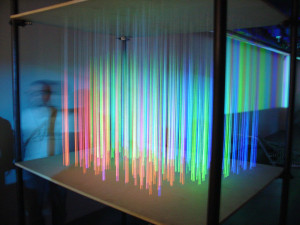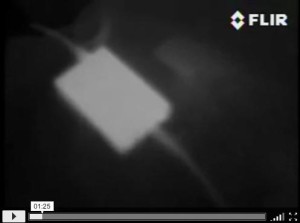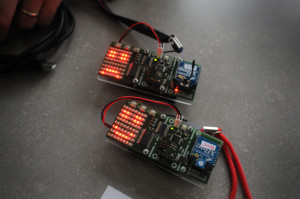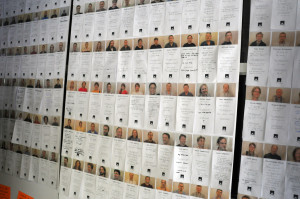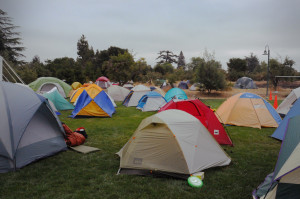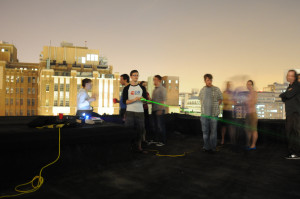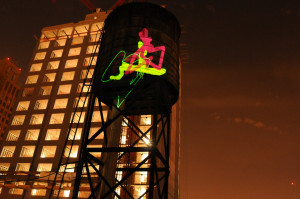I’m sorry. I had to do it. I murdered the Fail Whale… I don’t know what came over me.
Gian Pablo’s Immersive Video Project
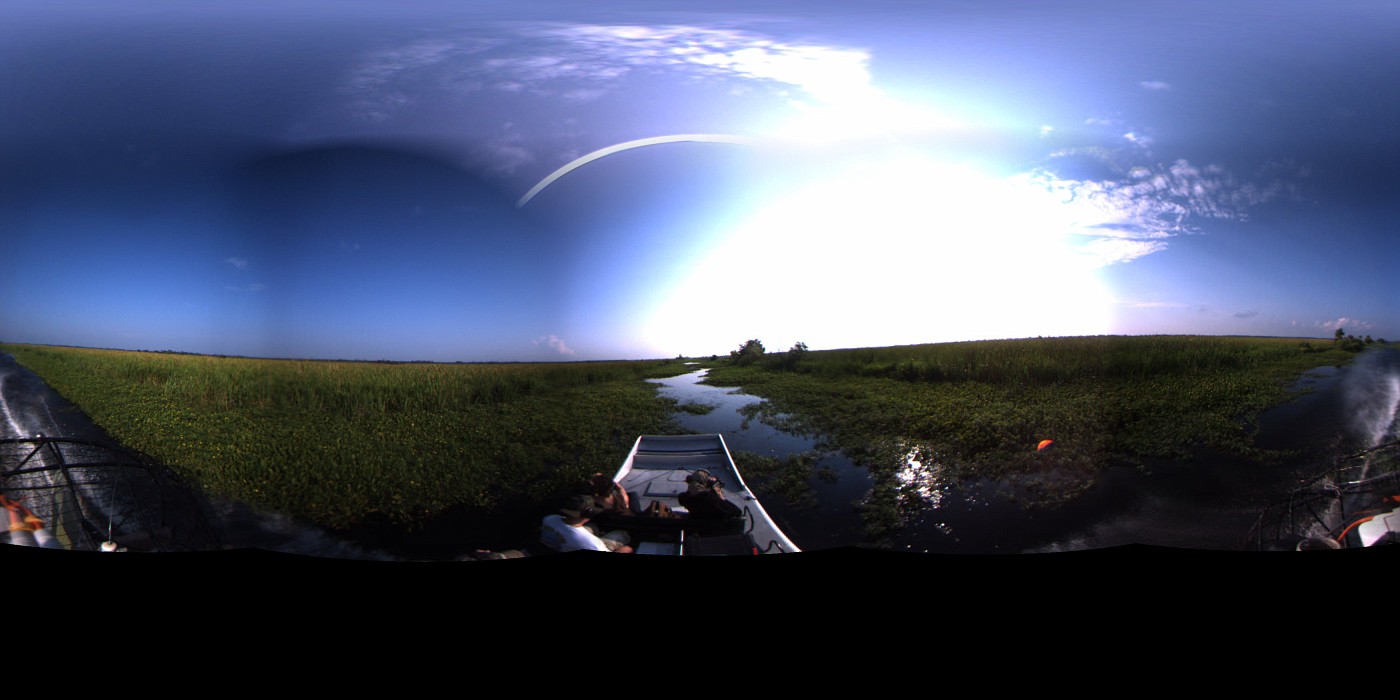
NYCResistor’s Gian Pablo Villamil is working on a really interesting project with panoramic Video in New Orleans. He can’t tell us what the project will do, who is involved, or if space aliens really exist, but the few photos he has on his site look pretty amazing and he has written about some solutions to technical hurdles associated with the piece. Stay tuned for more on the project! As per Gian’s request, this blog will self destruct in 5, 4, 3, 2…

3D Wiremap!
A 3D what you say?! One of the many projects we saw at The Last HOPE was the 3D Wiremap by Albert Hwang. The Wiremap, pictured above, is a surreal 3D display made with fishing wire. Yes, that’s right, I said fishing wire. Albert describes it as follows:
The projector throws its beam on an array of vertical wires. From the projector’s single-point perspective, all the wires are evenly spaced from one another. However, due to the randomized dimension of depth, from any other perspective, the wires create a 3d map… The result is a floating, glowing 3d object made entirely of light.
Check out this link to see some videos and read more about the project.
Volumes of Emptiness Installation

John Houck has created this really interesting installation, here’s his description of the guts of the piece:
This installation contains 35 motors that are controlled individually with an arduino microcontroller. Processing is used to send commands, via serial communication, to the arduino. The sequencing of the motors changing speed was inspired by the movement of people through public spaces.
The project is called Volumes of Emptiness and although the website doesn’t actually say where it’s exhibiting, there are some great photos and videos of the work in action. Looks like a very interesting and lively installation. I’d love to see a more concise write up about the logistics of the project.

Arduino Nano is born, shhh, it’s still sleeping…

Isn’t she pretty. It’s the Arduino Nano.
You see, when 2 Arduino’s get together (in private) and exchange their currents, a little robotstork brings you an Arduino Nano! Here’s a description from Trossen Robotics:
Arduino Nano is a surface mount breadboard embedded version with integrated USB. It is a smallest, complete, and breadboard friendly. The Nano was designed and is being produced by Gravitech. It has everything that Diecimila has (electrically) with more analog input pins and onboard +5V AREF jumper. Physically, it is missing power jack and power select jumper.
It’s a similar size to the Arduino Wee from Spark Fun but it’s a little different in size and features. It comes with the typical 6 analog pins, 14 digital pins (6 of which can do Pulse Width Modulation), 16 KB of Flash Memory (of which 2KB used by bootloader) and a 16 Mhz clock. What more could you ask for? And, it’s so cute!
XBEE meet Lilypad, Lilypad meet XBEE.
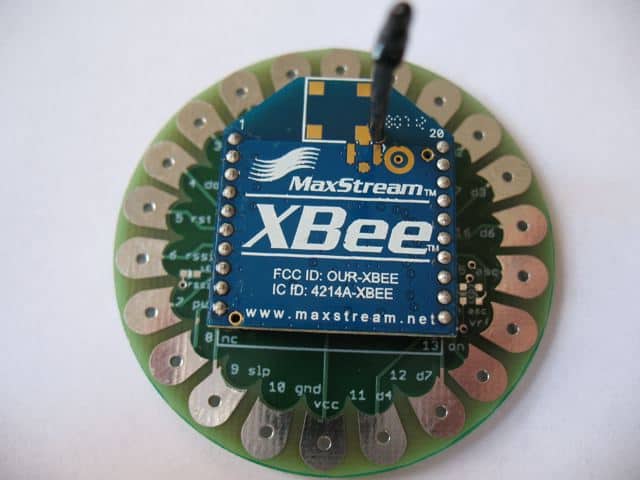
Rob Faludi and Kate Hartman posted about the protype version of the XBEE Lilypad. The Lilypad is the incredibly small — wearable version — of the Arduino, and to borrow a phrase from a well known advertisment, the XBEE ‘gives it wings!’. Not sure how much power this require through the Lilypad, but I can think of 500 amazing projects this could be used for. Check out the post on Rob’s site to learn more about the direction of the project.
Oh, and when you’re done reading about fun electronic prototypes, you can check out their recipe for a nice glass of Vegan Pork Martini. Yes, I said that right!
Thermal Images of Tom Igoe’s Desk…
… what more could a girl ask for!
I joke, but it’s pretty compelling how hot these little gadgets get and he’s got a neat little video to prove it. Something tells me the laptop on my, well, on my lap right now isn’t doing me any good.
The videos below were Directed and Creative Directed by James Frost, Aaron Koblin was the Technical Director, Justin Glorieux was the Executive Producer, Google stored the code, etc. etc. and they all teamed up (along with tons of other talented people) with Radiohead to make this amazing video for the song ‘House of Cards’. Aaron, best known for his Flight Patterns project is a Processing genius, and James Frost has worked with tons of amazing bands, which is all clearly evident in the video they helped create.
The about video below really shows how the entire team made this happen, but one of the most impressive parts of the shoot is the fact that they didn’t even use a video camera. The data was captured by a Geometric Informatics camera and a Lidar system, both of which determine the X, Y, and Z, coordinates of an object which were then filtered into processing to create the scenes below. The code is also available in Google Code and there’s a gorgeous interactive element where you can see the data being visualized on the X, Y, Z axis.
You can learn more about the video at James Frost’s website here.
My weekend at FOO Camp…
This past week I had the opportunity to attend FOO Camp in Sabastapol, CA. It was an amazing experience and I’m still trying to digest it all. Sessions I attended included ‘Hacking Bacteria’, ‘The History of Internet Art’, ‘Better Data Visualizations’, ‘Open Source Hardware’ and on and on… I also gave a talk on ‘The Future of News’ with John Markoff, Steven Levy and Monica Guzman and I participated in a 5 min Ignite talk titled ‘NYCResistor and Hardware Hacking in Brookland’. I could go on and on about the prodigious experiences at FOO Camp (not to mention playing werewolf until 4:30 am.) but one versatility it really affirmed for me is that the individuals that make up this global hacker, tinker and open source world are a truly altruistic, talented and generous community. You can see more photos here.

